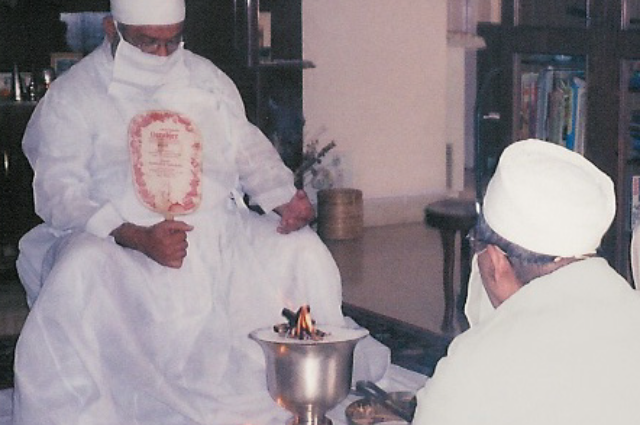
Source: wikimedia.org
The Parsi community of India is presently rejoicing their new year days and spreading joyful vibes all over the nation. Like any other festival, it is marked with quite a lot of energy. Over the years, this day has become a single-day celebration that is celebrated on New-year’s day itself. But many traditional Parsis celebrate the new year for multiple days. People who follow this culture, visit the Agiari or the Fire Temple during these holy times. They burn sandalwood in their houses and decorate their houses with rangoli. These days are also recognized for doing repentance. Repentance is a feeling of sorrow, particularly for any wrongdoings. It is known as a change of mind and turning away from sins. These days also come with the delicious feasts in Parsi households since people visit family and friends.
The Parsi community in India follows the Shahenshahi Calendar which does not account for leap years, and hence the celebration for Nowruz shifts 200 days from its original date. In India, the Parsi New Year is celebrated in July or August. And this year, the Parsi New Year was celebrated on the 16th of August. Nowruz ceremonies across India require cleansing and decorating the house, cooking delicious meals, inviting loved ones over, and attending the Fire Temple. Pateti is also considered promising for starting new ventures and begin new relationships. People also believe in donating to the charity of their choice. In short, this day is celebrated to support others and bring joyful cheer to everyone’s lives. And there are significant records and tales behind rejoicing this day as a new year.

Source: wikimedia.org
The magnificent timeline of the Parsi new year in India is based on the Shahenshahi Calendar. It marks the founding of the Persian calendar by the Persian King Jamshed. The Parsis or Zoroastrians, who mainly lived in Persia, were forced to leave their motherland when the Islamic troops invaded about 3,500 years ago. This event led to the displacement and resettlement of the community across the world. And with them, this community brought their culture to India and harmoniously co-existed for centuries. In India, the Zoroastrian community is known as Parsi, which is a literal translation of Persian.
The Pateti is New-year’s eve and a day on which people are expected to conceive about all the welfare and immoral things that have occurred in their lives during that year. They then reaffirm a commitment to live their lives through the principles of Zoroastrianism moral ideas, right words, and right action. Many Parsis also call Nowruz, the first day of the month of Farvardin, Pateti, completely dropping the day of repentance and transforming the meaning of the word Pateti to mean New Year’s Day.

Source: wikimedia.org
Currently, the festival of Pateti falls in August of the Gregorian calendar, but this will change in the future, as the Shehenshahi calendar does not allow for a leap year. This calendar is reconstructed from ‘Denkand’, which is a set of Zoroastrian faiths and customs belonging to the 10th century. And thus, it is also celebrated in July or August of the Gregorian calendar as Jamshed-I-Nowruz, a festival named after the Persian king. Zoroastrians who follow the 'Kadmi' from the Persian ancient calendar celebrate Nowruz a month earlier and those who follow the 'Fasli' meaning seasonal calendar celebrate Nowruz on the spring equinox or March 21 of the Gregorian calendar. Many of the customs for Pateti resembles the customs of the Persian, Iranian, and Fasli Nowruz. The major difference is culture. The Fasli/Iranian Nowruz customs are based in the Iranian Zoroastrian culture while Pateti customs are based on the Indian Parsi Zoroastrian culture.
On these pleasant days, family and friends come together to greet each other and eat delicious Parsi food. Breakfast customarily begins with Parsi dishes like ravo and sev. For lunch, there is usually rice pulao, Sali boti, which is a mutton gravy, and pathra-ni-machhi, which is a fish made in banana leaves. And then there’s always some sweet meals like sutarfeni or jalebi to finish the meals. These wonderful days are experienced with such tasty meals and a lot of peace. For all the Parsis, it is the day to forget all the hurt from the past and begin life newly. This day has been recognized as a sign of love and prosperity. And it also expands happiness in everyone’s life and further extends the spirit of harmony and brotherhood among people.
. . .
Reference:
- www.wikipedia.org
- www.zagny.org
